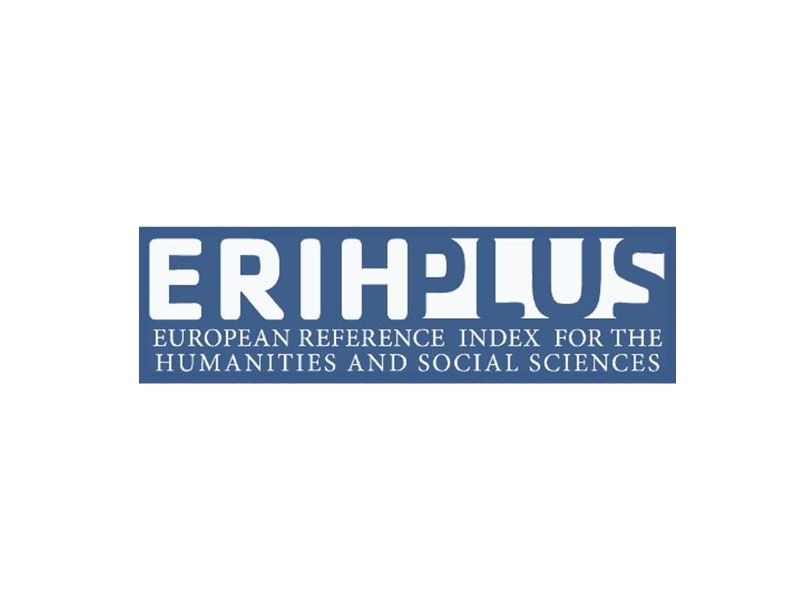Bartram’s Toy Production as a Knowledge Network
Abstract
Russian collector, art theorist and pedagogue Nikolai Bartram can be classified as an early Soviet avant-garde labor enthusiast. For him, the toy had a double meaning: it represented basic labor processes and pre-existing logistical connections, and it conveyed autonomous knowledge. Bartram boldly reduced the aesthetic and practical side of the toy to this autonomy of knowledge, and following the achievements of pedagogy of the time, proposed his own model of the development of the handicraft. In this model, the proper placement of toys as both instruments of idealization of folk crafts and instruments of proper systematic knowledge of them confronts the logic of capitalism and substantiates a system of interactions between people and things that foreshadows the actor-network approach. Reading Bartram’s texts and considering the toys he developed and the museum he opened as an instrument of social design in the light of the actor-network theory makes it possible both to see the unity of his activity before and after the revolution and to introduce him in the canon of early Soviet avant-garde intellectuals who problematized productive labor through aesthetic means.
References
Bartram, N. D. (1911). “Igrushki i nachatki ruchnogo truda.” [Toys and the rudiments of manual labor]. In: Igrushka: ee istoriia i znachenie [Toy: its history and meaning]. M.: I. D. Sytin: 237–246.
Bartram, N. D. (ed.) (1923). Pribautki [Folk Jokes]. Moscow: Publishing House of the Russian Theater Society.
Bartram, N. D., Ovchinnikova, I. E. (1928). Muzei igrushki. Ob igrushke, kukol'nom teatre, nachatkakh truda i znanii i o knige dlia rebenka [Toy Museum. About a toy, a puppet theater, the beginnings of labor and knowledge, and a book for a child]. Leningrad: Academia.
Bartram, N. D. (1979). Izbrannye stat'i. Vospominaniia o khudozhnike [Selected articles. Memories of an artist]. Moscow: Soviet artist.
Vaisero, W. F. (2018). “N. D. Bartram-khudozhnik, pedagog, novator v oblasti bo- gorodskoi khudozhestvennoi rez'by po derevu.” [N. D. Bartram is an artist, teacher, innovator in the field of Bogorodsk artistic woodcarving]. Traditsionnoe prikladnoe iskusstvo i obrazovanie [Traditional Arts and Crafts and Education], 4: 136-143.
Ivanov, V. V. (2007). “Pervaia tret' dvadtsatogo veka v russkoi kul'ture: mudrost', razum, iskusstvo.” [The first third of the twentieth century in Russian culture: wisdom, reason, art]. Trudy RASh [Proceedings of the Russian Anthropological School], 4-1: 8-117.
Kartashova, M. V. (2019). “Kustarnye muzei Rossiiskoi imperii v kontse XIX-nachale XX veka.” [Handicraft museums of the Russian Empire in the late XIX-early XX centuries]. Vestnik Nizhegorodskogo universiteta im. N. I. Lobachevskogo, 2: 19-26.
Kuznetsova, L. A. (2013). “Istoriia sozdaniia Kurskogo istoriko-arkheologicheskogo i kustarnogo muzeia, uchrezhdennogo v pamiat' poseshcheniia Nikolaem II Kurska v 1902 g.” [The history of the founding of the Kursk Historical, Archaeological and Handicraft Museum, established in memory of Nicholas II’s visit to Kursk in 1902]. Vestnik arkhivista, 4: 25–39.
Lavrov, D. E. (2020). “Fedoskinskaia lakovaia miniatiura, sozdannaia po obraztsam Kustarnogo muzeia (1910–1930-e gg.).” [Fedoskino lacquer miniature, created according to the samples of the Handicraft Museum (1910-1930s)]. Voprosy muze‐ ologii, 11(1): 38–49.
Latour, B. (2015). Paster: Voina i mir mikrobov [Pasteur: War and peace of microbes]. St. Petersburg: European University at St. Petersburg.
Narvoit, K. Y. (2015) “Znamenityi i neizvestnyi Kustarnyi muzei.” [The Famous and Unknown Handicraft Museum]. In: Kustarnyi muzei: opyt sokhraneniia traditsii [Handicraft Museum: Experience in Preserving Traditions]. 24:3–12.
Ozerova, O. V. (2018). “Khudozhestvenno-pedagogicheskomu muzeiu igrushki im. N. D. Bartrama 100 let.” [To the Artistic and Pedagogical Museum of Toys named after N. D. Bartram 100 years]. Traditsionnoe prikladnoe iskusstvo i obrazovanie, 3: 7–13.
Rychkova, E. A. (2017) “Rol' Kustarnogo muzeia v deiatel'nosti zemskikh uchebnykh masterskikh moskovskoi gubernii v kontse XIX-nachale XX veka.” [The Role of the Handicraft Museum in the Activities of the Zemstvo Educational Workshops of the Moscow Province in the Late 19th and Early 20th Centuries]. Pedagogika iskusstva. 4:200–203.
Sazonov, N., Hennig, A. (2021). Sintez sovremennosti: ruiny GAKhN i postdistsiplinarnost' [Synthesis of modernity: the ruins of the State Academy of Arts and Sciences and post-disciplinarity]. Moscow: Publishing house of the Gaidar Institute.
Ukhtomsky, A. A. (2002). Dominanta. Stat'i raznykh let [Dominant. Articles of different years. 1887–1939]. Saint-Petersburg: Piter.
Filippova, O. N. (2017). “N. D. Bartram — kollektsioner i khudozhnik (1873–1931 gg.).” [N. D. Bartram — collector and artist] (1873-1931). In: Sovremennye proble‐ my gumanitarnykh i estestvennykh nauk [Modern problems of the humanities and natural sciences]: 188–193.
Copyright (c) 2023 European University at St Petersburg

This work is licensed under a Creative Commons Attribution 4.0 International License.







